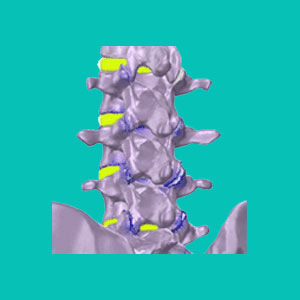
Lumbar degenerative disc disease treatment options are some of the most often utilized therapies in the entire dorsalgia sector of medicine. There is no shortage of choices when it comes to treating disc degeneration in the lower back. While we could spend this article addressing the details of each and every available treatment method, we think the essay will be more helpful if we look at the treatment of lumbar DDD as a whole. To this end, we will discuss some specific modalities of degenerated disc care, but will mostly enlighten patients to why treatment is not likely to be needed in virtually every diagnosed case.
In essence, lumbar degenerative disc disease treatment is indicated in a tiny segment of diagnosed patients, but most are led to believe that they require professional healthcare interventions for a condition that is proven to be completely non-pathological and innocent of causing any type of pain in the overwhelming majority of people.
Conservative Lumbar Degenerative Disc Disease Treatment
In most scenarios, treatment for degenerative disc disease remains conservative in nature and continues long-term. This is because none of the methods used can cure DDD. There is no cure possible. There is also rarely a need for a cure, since the condition is completely normal, as part of the aging process.
The common conservative medical prescriptions include drugs and physical therapy, while the complementary recommendations include chiropractic, exercise therapy, TENS, massage and many other alternative modalities. None of these options will change the spinal anatomy or restore youth to old and worn spinal spacers, regardless of whether the source of pain is actually the disc degeneration or not.
All these methods will accomplish is to provide the possibility for some temporary pain relief, but many do not even achieve that humble goal, since the disc deterioration is not the fundamental cause of the symptoms and even if it were, these modalities do not structurally address the degeneration itself.
Moderate and Surgical Lumbar DDD Treatment
For patients who do not see acceptable results from conservative care, or for patients who simply get tired of paying for treatment over the course of years, there are more drastic methods of disc degeneration therapy that can be prescribed.
Epidural injections are common for all types of back and neck pain, although these are known to be incredibly temporary in their efficacy and must be repeated over and over in order to have any lasting positive effects whatsoever. How they are supposed to effectively treat worn-out spinal discs remains a mystery, but they are often used, regardless.
For chronic disc degeneration pain conditions, DDD surgery will usually be recommended at some point, especially if the patient starts to press their care providers for answers as to why their symptoms have never healed. This is a critical time for back and neck pain sufferers and most who take that final step into the surgical theater will regret it for the rest of their lives.
The invasive methods of treatment usually involve either replacing the organic worn disc with a synthetic substitute or creating a spinal fusion by removing the degenerated intervertebral spacer(s) altogether. Disc replacement offers better hope for returning normal functionality after surgery, although many patients do suffer mild to severe postoperative complications, usually concerning hardware rejection or device failure in the operated level.
Meanwhile, spinal fusion patients have been surgically altered to an extent where they have little hope of returning to a normal lifestyle. Most will ironically suffer grossly accelerated degeneration of surrounding intervertebral discs, necessitating the need for more fusions in the future. It is a cruel fate, caused a barbaric technique to treat mostly benign disc aging.
Lumbar Degenerative Disc Disease Treatment Options
There are surely a few instances in which a spinal disc is degenerated to the point where symptoms certainly are directly sourced. However, these cases are truly very uncommon. We have only seen a handful in almost 30 years of involvement in the back and neck pain therapy sector. That being said, we constantly receive correspondence from readers who insist that they saw their x-rays, or MRI films, and that their discs are really desiccated. Yes, of course they are. That is our point exactly. We all have these anatomical changes in our spines. These are normal events that come from living a normal life.
There is no proof that disc degeneration is inherently painful or harmful in any way. This is why major medical associations have since warned member doctors not to implicate disc disease as the cause of pain unless a definitive pathological component can be decisively proven. This is scientific fact and certainly not editorial speculation in any way.
Lumbar degenerative disc disease treatment is perhaps the most profitable of all back pain therapies niches. This is due to the incredible and illogical diagnostic statistics citing lumbar DDD as a primary source of symptoms in many patients.
Now, we all now know that degenerative disc disease is a completely normal, universal and generally asymptomatic part of the aging process, but that does not stop doctors and therapists from using it as a diagnostic scapegoat to generate untold billions of dollars in profits every year from unnecessary care and surgery.
Why are we so negative about degenerative disc disease treatment? This is a question that we receive from a great number of medical and complementary care providers. We tell them the truth, which is redundant; since they already know the answer in the depths of their hearts and minds: DDD does not typically require any treatment. DDD is normal. Disc deterioration is never a disease. Pretending that DDD is inherently pathological is baseless medical fraud and may actually constitute a criminal act.
Any more questions? Nope, we think that about covers it.
Herniated Disc > Lumbar Degenerative Disc Disease > Lumbar Degenerative Disc Disease Treatment





